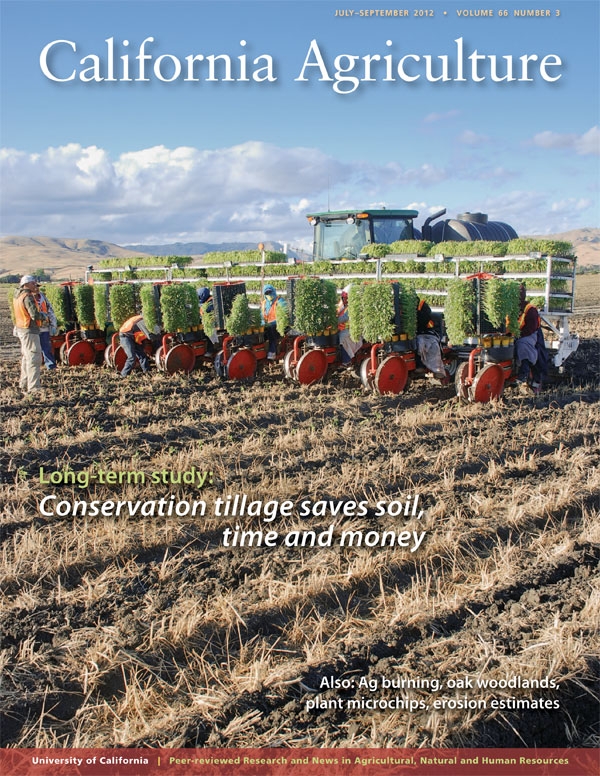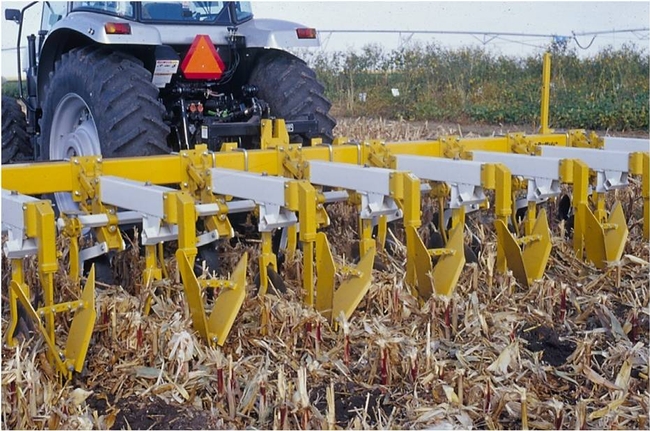Posts Tagged: conservation agriculture
'Conservation agriculture' gaining favor with California farmers
A desire to reduce fuel and water use is leading some farmers in the Central Valley to operate in new, more sustainable ways, reported Alice Daniel on KQED's The California Report this morning.
For the five-minute story, Daniel interviewed Jeff Mitchell, UC Cooperative Extension specialist in the Department of Plant Sciences at UC Davis, and Dino Giacomazzi, a Hanford dairy farmer. These new farming systems, they said, aren't straight forward and require a steep learning curve.
Sometimes they find themselves wondering, "What is happening out here?" Mitchell says. "And all your built-up experience base flies out the window."
In the last seven years, Giacomazzi has dramatically changed the way he grows cattle feed. He has reduced the number of times he tills the field from 14 to just 2 times a year. Despite documented savings in fuel and reduction in dust emission, conservation agriculture has not been implemented widely in the Central Valley. Farmers like innovation, Giacomazzi notes, but many are reluctant to take the risk associated with changing long-held farming practices.
"It's very difficult to make money farming," Giacomazzi said. "You're only going to get one shot each year to make it."
Those interested in learning more about conservation agriculture systems are invited to the annual Twilight Conservation Agriculture field day, 4 p.m. Sept. 13 at the UC West Side Research and Extension Center. For more information, see the meeting announcement. Register for the free event here: http://ucanr.edu/TwilightReservation.
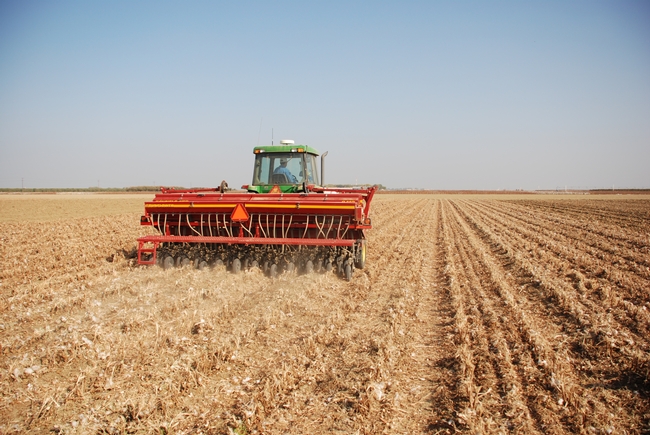
Farmers can reduce fuel and water use and cut down on dust emissions using conservation agriculture practices.
Conservation agriculture involves a systems approach to farming
When delving into conservation agriculture production, it's important to learn the entire system, advises Dino Giacomazzi, a Hanford dairy operator who uses the process to produce corn silage for his cows. Giacomazzi was quoted in a Hanford Sentinel story that focused on research results released in the latest issue of California Agriculture journal. The research concluded that the system works effectively in a cotton and tomato rotation.
In the Sentinel story, Giacomazzi urged local growers interested in undertaking conservation agriculture systems to map out the practice carefully before they start.
“It’s very important for farmers to learn the entire system of conservation tillage from end to end and to know everything they’re going to do for the whole year before they start doing it,” he said. “A lot of failures happen ... when people don’t think the whole thing through.”
Another result of a news release about the new issue of California Agriculture journal was an editorial in the Porterville Recorder praising conservation systems. In the opinion piece, the editors wrote that they often hear farmers are not good stewards of the environment, "but that just isn't true."
"One shining example of being good stewards is no-till farming, a practice that has been around a couple of decades but one that is growing in acceptance," the editorial said.
Giacomazzi, the Hanford dairyman, is a member of Conservation Agriculture Systems Innovation (CASI), a collaborative effort involving UC, farmers and industry representatives that provides information and support to encourage adoption of conservation agriculture practices in California. He presented the keynote address at an event in January that launched CASI, which is available below:
Leaving crop residues in the field improves water use efficiency
Managing crop residues to essentially make them disappear has been the norm in California agriculture.
But a growing body of research, and experience with conservation tillage on thousands of acres of Central Valley farmland, is showing that reducing tillage and leaving crop residues on the soil surface can improve water use efficiency.
“Crop residues are an inevitable feature of agriculture,” Jeffrey Mitchell, cropping systems specialist in the Department of Plant Sciences, UC Davis, wrote in the April-June 2012 issue of California Agriculture journal. “Because no harvest removes all material from the field, the remaining plant matter accumulates and is typically returned to the soil through a series of mixing and incorporating operations involving considerable tractor horsepower, an array of tillage implements and cost.”
Conservation tillage is a suite of low-impact cultivation practices that includes leaving crop residues on the soil surface and planting new crops on top, significantly decreasing the number of tractor passes needed to prepare fields for planting. In turn, growers reduce their fuel, labor and maintenance costs, and less dust and pollution gets into the air.
In two field studies conducted at the UC West Side Research and Extension Center in Five Points, no-tillage and standard tillage operations were compared in a corn/wheat rotation. Mitchell and colleagues found that 0.89 and 0.97 inches more water was retained in the no-tillage soil than in the tilled soil.
And in three field studies on crop residue coverage, about 0.56, 0.58 and 0.42 inches more water was retained in residue-covered soil than in bare soil following 6 to 7 days of overhead sprinkler irrigation. The full study results are published in the April-June 2012 California Agriculture journal.
The authors estimated that coupling no-tillage with practices that preserve high residues on the soil surface can reduce evaporative losses during the summer by about 4 inches (13 percent), assuming a seasonal evapotranspiration demand of 30 inches.
In widespread use in other regions of the country, conservation tillage practices appear to be catching on in California. In surveys conducted by Sustainable Conservation and the UC Conservation Agriculture Systems Initiative, the amount of farmland under conservation tillage statewide grew by nearly 20 percent between 2008 and 2010, to about 1 million acres.
Mitchell and colleagues warn that a number of practical factors must be addressed before a wholesale transformation to no-tillage, residue-preserving production can be envisioned in California: “These include the relative ease with which a farm's existing cropping mix might be converted to no-till, the need for and cost of new equipment and the learning curve for new management practices.”
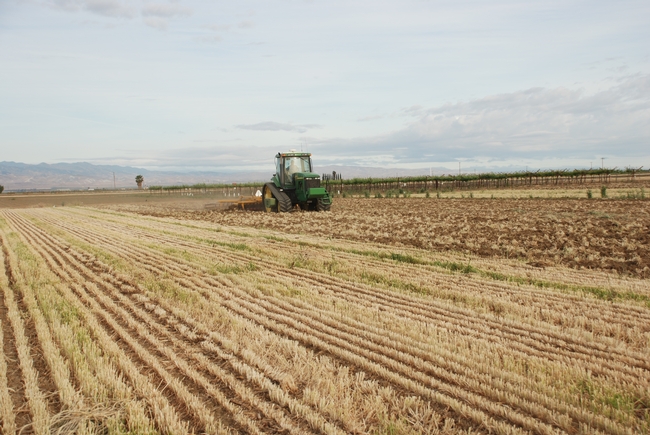
A two-year study compared soil water content in tilled (right, subsoil ripped) and no-tillage (left) plots.
Conservation ag practices highlighted at 'CASI' launch
University of California advisors and specialists, farmers, scientists and agriculture professionals gathered Friday in Clovis to launch a new organization that could potentially save farmers time and money, and reduce their impact on the environment, wrote Robert Rodriguez in the Fresno Bee.
The event marked the establishment of the Conservation Agriculture Systems Institute, which will support research and education efforts to encourage farmers' implementation of conservation agriculture practices.
The Fresno Bee story appeared at the top of the paper's Saturday business page under the headline "UC pushes conservation."
UC Cooperative Extension cropping systems specialist Jeff Mitchell said the U.S. is behind the rest of the world in adopting reduced tillage and conservation practices. But that could change as farmers face increasing regulation.
"We are going to face increased demands to produce more in a way that is less damaging to the environment," Mitchell said. "This is not going to be business as usual anymore. And it's not just about making a profit; it is about optimizing yields and looking at the sustainability of our production methods."
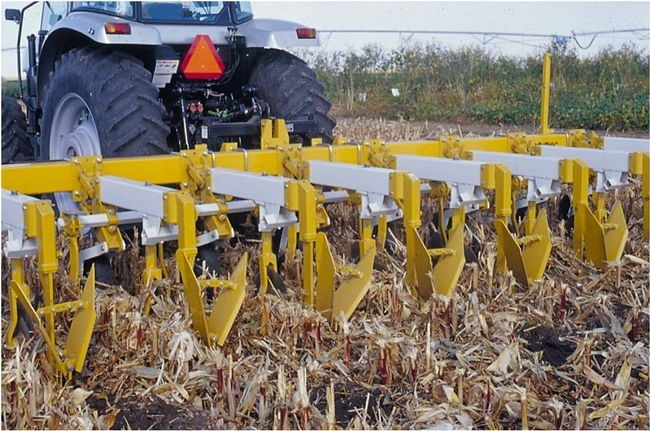
Strip tillage is one example of conservation agriculture.
More farmers trying conservation agriculture
"Let it be" is the mantra of some Central Valley farmers when it comes to turning up the soil, wrote John Holland in the Modesto Bee. Holland was reporting on a recent UC survey that found more farmers are using conservation agriculture practices.
The survey was conducted by UC's Conservation Agriculture Systems Institute, made up of government, academic and environmental partners. It looked at land in nine San Joaquin Valley counties that was planted in silage and grain corn, small grains for hay, tomatoes, cotton, dry beans and melons.
In 2010, conservation tillage systems accounted for about 14 percent of the acreage, an increase from about 10 percent in 2008. Minimum tillage practices were used on about 33 percent of crop acreage in 2010, up from about 21 percent in 2008.
In California, a different problem exists
Stockton Record
In California, 75 to 80 percent of corn is a genetically engineered variety, and much of it carries Bt genes, said Kent L. Brittan, the University of California Cooperative Extension's director for Yolo County and field crops advisor.
The corn seed is purchased for glyphosate tolerance. Seed companies commonly combine the traits in their products, so the Bt genes are part of the package, even though corn rootworm is not a concern for California growers.
"We have the insect; it has never - knock on wood - been a corn pest here in California, so the resistance problem would not be an issue with us," Brittan said.


